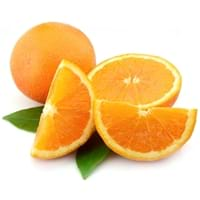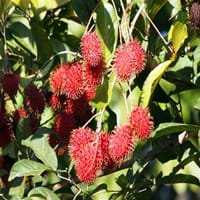Health Benefits
Arthritis treatment, Cancer prevention, Heart care
Anti-oxidant properties, Boosts immune system, Skin rejuvenation, Strengthening of bones
General Benefits
Anti-inflammatory properties, Cures cough, Cures fever, Digestive aid, Healing of wounds, Maintains healthy cholesterol level
Antiseptic properties, Cures headache, Removes waste from kidney
Skin Benefits
Anti-aging benefits, Brightens and lightens complexion, Reduces wrinkles, Treatment of dark spots
Hydrates skin
Hair Benefits
Promotes longer and healthier hair, Protects hair, Rejuvenates scalp, Shiny hair
Good conditioner
Allergy Symptoms
Abdominal cramps, Hives, Itching, Nausea, Wheezing
Chest pains, Rhinitis, Wheezing
Side Effects
Allergic reaction, Skin rash, Possibly unsafe during pregnancy
Unknown
Best Time to Eat
As a snack in the late afternoon, Eat the fresh ones, avoid mixing with any other foods, don't eat after meal., Morning time (before lunch), Strictly avoid empty stomach
As a snack in the late afternoon, Don't consume at night and before bed, Eat the fresh ones, avoid mixing with any other foods, don't eat after meal., Morning time (before lunch)
Vitamin B5 (Pantothenic Acid)
Vitamin C (Ascorbic Acid)
Vitamin K (Phyllochinone)
Phytosterol
Not Available
Calories in Fresh Fruit with Peel
Not Available
Calories in Fresh Fruit without Peel
Not Available
Calories in Frozen Form
Not Available
Calories in Jam
Not Available
Calories in Pie
Not Available
Type
Citrus
Tree fruit, Tropical
Season
Winter
Early summer, Early winter, Late fall, Late spring
Varieties
Clementine, Dancy, King Mandarin, Murcott, Ponkan, Robinson, Satsuma and Sunburst
Rongrien, Chompu, Rapiah, Bingjai and Lebak Bulus
Color
Orange
Coral red, Yellow
Inside Color
Orange
Greyish-white
Taste
Sweet-Sour
Sour, Sweet
Origin
South-Eastern Asia
Unknown
Grows on
Not Available
Trees
Soil Type
Well-drained
Clay, Loam
Climatic Conditions
Sunny
Humid
Facts about
- It is known by another name ' Mandarin'.
- Oil extracted from its peel is used in various skin and hair care products.
- Tangerines is also known as the ‘Christmas Orange’ because it is used to stuff kids' stockings..
- Oils extracted from its seeds is used to make soaps and candles.
- 'Rambut' means hairy in Malay.
- It makes the best hair mask.
- Seeds are edible and healthy too.
Spirits
Not Available
Yes
Cocktails
Not Available
Yes
Top Producer
China
Thailand
Other Countries
Brazil, Iran, Italy, Japan, Korea, Morocco, Spain, Turkey
Africa, India, Indonesia, Malaysia, Philippines, Sri Lanka
Top Importer
China
Singapore
Top Exporter
Spain
Thailand
Botanical Name
Citrus reticulata
Nephelium lappaceum
Synonym
Citrus clementina or Citrus nobilis
Rambota
Subkingdom
Tracheobionta
Tracheobionta
Division
Magnoliophyta
Tracheophyta
Class
Magnoliopsida
Magnoliopsida
Order
Sapindales
Sapindales
Family
Rutaceae
Sapindaceae
Species
C. reticulata
N. lappaceum
Generic Group
Citrus fruit
Not Available
Difference Between Tangerine and Rambutan
We might think that Tangerine and Rambutan are similar with respect to nutritional value and health benefits. But the nutrient content of both fruits is different. Tangerine and Rambutan Facts such as their taste, shape, color, and size are also distinct. The difference between Tangerine and Rambutan is explained here.
The amount of calories in 100 gm of fresh Tangerine and Rambutan with peel is Not Available and 69.00 kcal and the amount of calories without peel is 53.00 kcal and Not Available respectively. Thus, Tangerine and Rambutan belong to Low Calorie Fruits and High Calorie Fruits category.These fruits might or might not differ with respect to their scientific classification. The order of Tangerine and Rambutan is Sapindales and Sapindales respectively. Tangerine belongs to Rutaceae family and Rambutan belongs to Sapindaceae family. Tangerine belongs to Citrus genus of C. reticulata species and Rambutan belongs to Nephelium genus of N. lappaceum species. Beings plants, both fruits belong to Plantae Kingdom.









